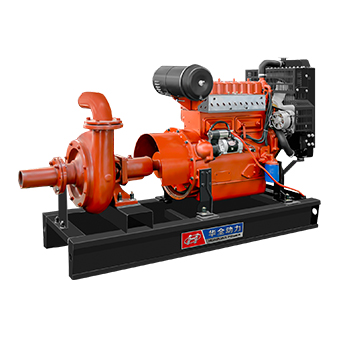
Sewage pumps, as a vital water pumping device, play an indispensable role in modern industrial and municipal construction. With their efficient drainage capacity and excellent corrosion resistance, they play a significant role in numerous applications, such as sewage treatment, stormwater drainage, and mine drainage. By delving into the structure, operating principles, and how to choose the right sewage pump, we will demystify this device and explore its crucial role in environmental protection.
1. What is a Sewage Pump?
As the name suggests, a sewage pump is a pump specifically designed to discharge sewage, wastewater, and liquids containing solid particles. Its primary function is to pump and discharge fluids to a designated location. It is commonly used in sewage treatment facilities, chemical plants, mines, and municipal sewage systems. Sewage pumps can be categorized into various types based on their structure and operating principle, including submersible, centrifugal, and pneumatic.
2. The working principle of a sewage pump is that its internal mechanical structure draws sewage or other liquids through the pump body for extraction and discharge. Driven by the motor, the impeller within the pump rotates at high speed, generating centrifugal force that draws liquid into the pump's inlet and pushes it out to the outlet. This pump's operation ensures efficient removal of wastewater, ensuring the proper functioning of the sewage system.
Sewage pumps operate primarily based on fluid dynamics, using centrifugal force to propel liquids. Specifically, the motor drives the pump's rotor at high speed, ejecting the liquid under centrifugal force and discharging it through the pump casing. Sewage pumps typically feature larger impellers to handle liquids containing solid particles, making them highly versatile and adaptable.
Submersible sewage pumps are the most common type, operating directly submerged in the liquid and typically used for drainage in low-lying areas or irrigation systems. Centrifugal sewage pumps are often used for long-distance liquid transport and offer higher efficiency and lower energy consumption.
III. Classification of Sewage Pumps
Depending on the application requirements, sewage pumps can be divided into the following main types:
1. Submersible Sewage Pumps: Suitable for use in low water levels, confined spaces, and high-temperature environments. They are widely used in municipal drainage, sewage treatment plants, and construction sites.
2. Centrifugal Sewage Pumps: With their high efficiency and excellent flow characteristics, they are widely used in industries such as the chemical, mining, and pulp and paper industries.
3. Self-Priming Sewage Pumps: Self-priming, they require no external water supply for startup and are suitable for routine drainage in rural areas and small factories.
4. Pneumatic Sewage Pumps: Driven by an air compressor, they are suitable for flammable and explosive environments and offer high safety.
IV. How to Choose the Right Sewage Pump?
Selecting the right sewage pump requires consideration of several factors. The following are some key elements:
1. Flow Rate Requirements: Discharge volume requirements vary in different applications, so it is important to select a sewage pump with the appropriate flow rate based on the specific situation.
2. Lift Requirements: Lift refers to the height to which a pump can lift a liquid. This requirement must be calculated based on the height difference between the equipment and the resistance loss in the pipeline.
3. Properties of the Pumped Medium: A thorough understanding of the medium's temperature, composition, and the size of the solid particles is crucial to selecting materials that are corrosion-resistant and wear-resistant.
4. Installation and Maintenance: Choosing a sewage pump that is easy to install and maintain can save significant time and money in future operations.
5. Energy Efficiency: When purchasing a sewage pump, consider the fluid's energy consumption and the equipment's operating efficiency. Choosing a more energy-efficient product can reduce long-term operating costs.
V. Scope of Sewage Pump Applications
Sewage pumps are widely used in various industries. The following are their main application areas:
1. Municipal Wastewater Treatment: At sewage treatment plants, sewage pumps primarily collect, transport, and treat various types of sewage to ensure that the treated water meets discharge standards.
2. Construction Sites: During the construction phase, sewage pumps are used to remove accumulated water, ensuring a dry construction site and ensuring smooth progress.
3. Agricultural Irrigation: During irrigation, sewage pumps raise water levels and efficiently deliver water to farmland, thereby improving agricultural production efficiency.
4. Industrial Sector: In industries like chemical and metallurgy, sewage pumps treat various wastewaters and circulating water from production processes, effectively controlling pollution sources.
5. Mine Drainage: In mining, sewage pumps remove groundwater and seepage from mines, keeping mining areas dry and safe.
VI. Sewage Pump Maintenance and Care
Regular maintenance and care are essential to ensure the proper operation and lifespan of your sewage pump. Here are some practical maintenance tips:
1. Regular Inspection: Regularly inspect the sewage pump's motor, control system, and pump body to ensure proper operation and identify any problems.
2. Pump Cleaning: Keep the pump body and water inlet clean to prevent dirt from clogging and affecting efficiency.
3. Lubrication and Maintenance: Lubricate the pump bearings regularly according to the manufacturer's specifications to ensure smooth operation.
4. Check the Seals: Regularly check the pump's seals to prevent sewage leaks and motor short circuits.
5. Winter Antifreeze: During cold weather, the equipment must be frost-proofed to prevent malfunctions caused by low temperatures.
VII. Future Development Trends of Sewage Pumps
With the continuous advancement of technology and growing environmental awareness, sewage pumps will continue to innovate in design and application. For example, intelligent sewage pumps will gradually replace traditional equipment, enabling remote monitoring and control through IoT technology, thereby improving efficiency and safety. Furthermore, in terms of materials technology, more environmentally friendly and durable materials will be developed to better adapt to the needs of various environments.
In short, as a vital component of environmental protection, sewage pumps, through technological advancements and improved application, will contribute to creating a cleaner and more sustainable future. Proper selection and maintenance will maximize the effectiveness of these equipment, becoming a crucial component in protecting our ecological environment.
